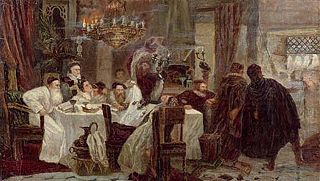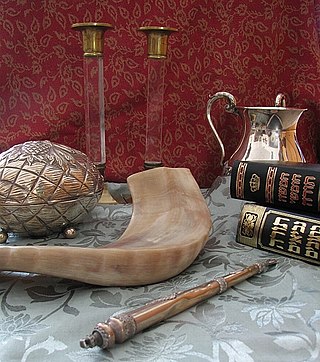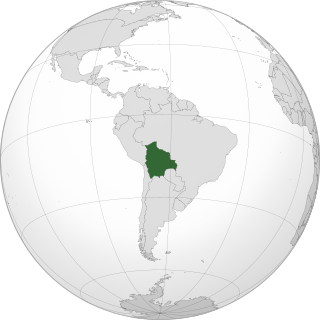Related Research Articles

Marranos is a term for Spanish and Portuguese Jews who converted to Christianity, either voluntarily or by Spanish or Portuguese royal coercion, during the fifteenth and sixteenth centuries, but who continued to practice Judaism in secrecy or were suspected of it. They are also called crypto-Jews, the term increasingly preferred in scholarly works over Marranos.

A converso, "convert", was a Jew who converted to Catholicism in Spain or Portugal, particularly during the 14th and 15th centuries, or one of their descendants.

Crypto-Judaism is the secret adherence to Judaism while publicly professing to be of another faith; practitioners are referred to as "crypto-Jews".
Torah im Derech Eretz is a phrase common in Rabbinic literature referring to various aspects of one's interaction with the wider world. It also refers to a philosophy of Orthodox Judaism articulated by Rabbi Samson Raphael Hirsch (1808–1888), which formalizes a relationship between traditionally observant Judaism and the modern world. Some refer to the resultant mode of Orthodox Judaism as Neo-Orthodoxy or, in some historiographies, as Frankfurter Orthodoxy.
Anusim is a legal category of Jews in halakha who were forced to abandon Judaism against their will, typically while forcibly converted to another religion. The term "anusim" is most properly translated as the "coerced [ones]" or the "forced [ones]".
Apostasy in Judaism is the rejection of Judaism and possible conversion to another religion by a Jew. The term apostasy is derived from Ancient Greek: ἀποστάτης, meaning "rebellious" Equivalent expressions for apostate in Hebrew that are used by rabbinical scholars include mumar, poshea Yisrael, and kofer. Similar terms are meshumad, and min or Epikoros, which denote heresy and the negation of God and Judaism, implying atheism.
The History of Sephardic Jews in England consists of the Sephardic Jews' contribution and achievement in England.
Jewish atheism is the atheism of people who are ethnically and culturally Jewish.
New Christian was a socio-religious designation and legal distinction referring to the population of former Jewish and Muslim converts to Christianity in the Spanish and Portuguese empires, and their respective colonies in the New World. The term was used from the 15th century onwards primarily to describe the descendants of the Sephardic Jews and Moors that were baptized into the Catholic Church following the Alhambra Decree of 1492. The Alhambra Decree, also known as the Edict of Expulsion, was an anti-Jewish law made by the Catholic Monarchs upon the Reconquista of the Iberian Peninsula. It required Jews to convert to Roman Catholicism or be expelled from Spain. Most of the history of the "New Christians" refers to the Jewish converts, who were generally known as Conversos, while the Muslim converts were called Moriscos.

The history of the Jewish community in Belmonte, Portugal, dates back to the 13th century; the community was composed of Spanish and Portuguese Jews who kept their faith through crypto-Judaism.
Pilpul is a method of studying the Talmud through intense textual analysis in attempts to either explain conceptual differences between various halakhic rulings or to reconcile any apparent contradictions presented from various readings of different texts. The word pilpul has entered English as a colloquialism used by some to indicate extreme disputation or casuistic hairsplitting.
Jewish Cubans, Cuban Jews, or Cubans of Jewish heritage, have lived in the nation of Cuba for centuries. Some Cubans trace Jewish ancestry to Marranos who came as colonists, though few of these practice Judaism today. The majority of Cuban Jews are descended from European Jews who immigrated in the early 20th century. More than 24,000 Jews lived in Cuba in 1924, and still more immigrated to the country in the 1930s. Following the 1959 communist revolution, 94% of the country's Jews emigrated, most of them to the United States. In 2007 an estimated 1,500 known Jewish Cubans remained in the country, overwhelmingly located in Havana. Several hundred have since immigrated to Israel. Considered one of the most important Latin American Jewish sites, Beth Shalom Temple is the epicenter for current Jewish life in Cuba and still conducts weekly Shabbat services.

Belmonte is a municipality in the district of Castelo Branco, Portugal. The population in 2011 was 6,859, in an area of 118.76 km2.
Off the derech is a Yeshiva-English expression used to describe the state of a Jew who has left an Orthodox way of life or community, and whose new lifestyle is secular, non-Jewish, or of a non-Orthodox form of Judaism, as part of a contemporary social phenomenon tied to the digital, postmodern and post-postmodern eras. In its broadest sense it can also include those changing to a milder form of Orthodoxy. Despite the term's pejorative and controversially dichotomic and definitive nature, it has become popular in use among Orthodox people, is found in mainstream literature, and has also been reclaimed by some OTD individuals.

Jewish secularism refers to secularism in a Jewish context, denoting the definition of Jewish identity with little or no attention given to its religious aspects. The concept of Jewish secularism first arose in the late 19th century, with its influence peaking during the interwar period.

Artur Carlos de Barros Basto was a Portuguese military officer and writer, who published several works related to Judaism. He was an important Jewish leader and one of the people who established the Jewish Community in Porto and assisted the construction of the Kadoorie Synagogue, the largest synagogue in the Iberian Peninsula. Furthermore, he helped the return of Crypto-Jews to the Jewish people and, during World War II, helped Jewish refugees escape the Holocaust.
Footsteps is a not-for-profit organization based in New York City that provides educational, vocational, and social support to people who have left or want to leave a Haredi or Hasidic Jewish community in the United States.

The history of the Jews in Bolivia goes back to the colonial period of Bolivia in the 16th century. In the 19th century, Jewish merchants came to Bolivia, most of them taking local women as wives and founding families that merged into the mainstream Catholic society. This was often the case in the eastern regions of Santa Cruz, Tarija, Beni and Pando, where these merchants came either from Brazil or Argentina.

Faranak Margolese is an American-Israeli writer, best known as the author of Off the Derech, a book about contemporary assimilation in the Orthodox Jewish world.
The Festival of Santa Esterica is a holiday that was created as a substitute for Purim by the Anusim after their expulsion from Spain in the late 15th century. It is still celebrated today in Latin America and the Southwestern United States.
References
- ↑ Fader, Ayala (2014). "Anthropology and History". American Jewish History. 98 (1): 1–8. doi:10.1353/ajh.2014.0003. S2CID 162235842.
- 1 2 "Undercover atheists". aeon . Retrieved 20 March 2015.
- ↑ Ahmad, Catrin Nye and Athar (2015-01-09). "When believers marry atheists". BBC News. Retrieved 2020-06-15.